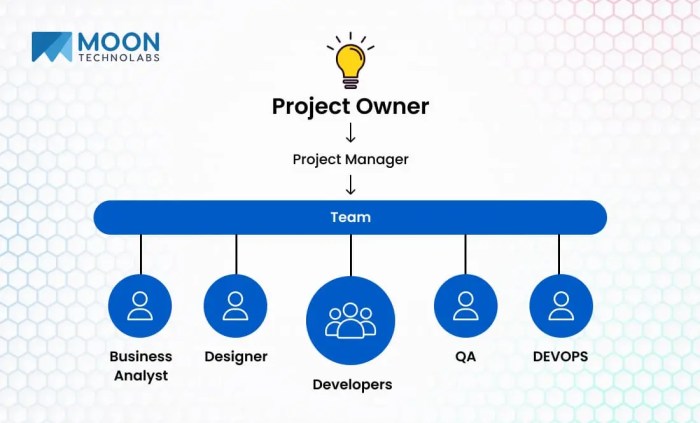In today’s globally interconnected world, businesses are constantly seeking innovative ways to optimize their operations and enhance their competitive edge. One increasingly popular strategy is outsourcing software development, and within this realm, nearshore software development teams are emerging as a powerful solution. This comprehensive guide delves into the intricacies of nearshore development, exploring its benefits, challenges, and considerations for businesses of all sizes.
What is Nearshore Software Development?
Nearshore software development refers to outsourcing software development projects to a company located in a geographically proximate region. Unlike offshore outsourcing, which involves engaging teams in distant countries like India or the Philippines, nearshore outsourcing focuses on countries closer to the client’s location. This proximity often translates to reduced time zone differences, improved communication, and easier collaboration.
Key Advantages of Nearshore Software Development, Nearshore software development team
- Reduced Time Zone Differences: The smaller time difference facilitates real-time communication and quicker response times, minimizing delays and streamlining the development process. This is particularly beneficial for agile development methodologies.
- Improved Communication and Collaboration: Geographical proximity allows for easier in-person meetings, workshops, and impromptu discussions, fostering stronger relationships and better understanding between the client and the development team. This contributes to enhanced project management and reduced misunderstandings.
- Cultural Similarity and Shared Language: Nearshore teams often share a similar cultural background and language, leading to smoother communication and a better understanding of work ethics and business practices. This minimizes cultural barriers and potential communication breakdowns.
- Cost-Effectiveness: While not as inexpensive as offshore outsourcing, nearshore development still offers significant cost savings compared to building an in-house team. This is especially true when considering factors like salaries, office space, and infrastructure costs.
- Stronger Intellectual Property Protection: The closer proximity offers better control over intellectual property (IP) and reduces the risks associated with data security and confidentiality breaches, compared to outsourcing to more distant locations.
- Easier Travel and On-site Visits: The reduced travel time and costs make it easier for clients to visit the development team, inspect progress, and build stronger relationships.
Choosing the Right Nearshore Location
Selecting the optimal nearshore location is crucial for the success of your project. Several factors should be considered:
Factors to Consider When Choosing a Nearshore Location
- Technical Expertise: Ensure the nearshore team possesses the necessary technical skills and experience in the relevant technologies and programming languages for your project.
- Time Zone Alignment: Minimize the time zone difference to optimize communication and collaboration.
- Language Proficiency: Choose a location where the development team speaks your language fluently or at least has a high level of proficiency.
- Cultural Compatibility: Consider the cultural nuances and ensure compatibility with your company culture.
- Cost of Development: Compare the cost of development in different nearshore locations to find the most cost-effective option without compromising quality.
- Legal and Regulatory Framework: Research the legal and regulatory environment to ensure compliance and protect your intellectual property.
- Infrastructure and Technology: Assess the availability of reliable infrastructure, internet connectivity, and technological resources.
Popular Nearshore Locations
Several countries are popular choices for nearshore software development, including:
- Mexico (for US clients): Offers a large pool of skilled developers, relatively low costs, and a close proximity to the US.
- Canada (for US clients): Known for its highly skilled workforce and strong intellectual property protection.
- Latin America (for US clients): Countries like Argentina, Colombia, and Brazil offer a growing talent pool and cost advantages.
- Eastern Europe (for Western European clients): Countries like Poland, Ukraine, and Romania provide skilled developers at competitive prices.
Challenges of Nearshore Software Development
While nearshore development offers numerous advantages, it’s essential to acknowledge potential challenges:
- Communication Barriers: Although often minimized, language and cultural differences can still pose challenges.
- Project Management Complexity: Managing a remote team requires robust project management strategies and tools.
- Data Security Concerns: While reduced compared to offshore, data security remains a concern and requires careful planning.
- Finding Reliable Partners: Thorough due diligence is essential to identify trustworthy and capable nearshore development partners.
Best Practices for Successful Nearshore Software Development
To maximize the benefits and mitigate the risks, follow these best practices:
- Clear Communication Protocols: Establish clear communication channels, meeting schedules, and reporting mechanisms.
- Robust Project Management: Implement a robust project management methodology, such as Agile, to track progress and manage risks effectively.
- Thorough Due Diligence: Conduct comprehensive background checks on potential nearshore partners.
- Strong Contracts and Agreements: Develop well-defined contracts that clearly Artikel responsibilities, deliverables, and intellectual property rights.
- Regular Monitoring and Evaluation: Regularly monitor project progress, evaluate performance, and address any issues promptly.
Frequently Asked Questions (FAQ)
- Q: What is the difference between nearshore and offshore software development?
A: Nearshore outsourcing involves working with teams in geographically closer regions, while offshore outsourcing engages teams in distant countries. Nearshore offers advantages in communication, time zone alignment, and cultural similarity. - Q: Is nearshore software development more expensive than offshore?
A: Yes, generally nearshore development is more expensive than offshore, but it’s often less expensive than building an in-house team and offers better communication and collaboration. - Q: How can I find a reliable nearshore software development team?
A: Thorough research, online reviews, referrals, and due diligence are essential for finding a trustworthy and capable partner. Consider factors like experience, expertise, and client testimonials. - Q: What are the key benefits of choosing a nearshore team?
A: Key benefits include improved communication, reduced time zone differences, cultural similarity, cost-effectiveness, and stronger intellectual property protection. - Q: What are the potential risks of nearshore software development?
A: Potential risks include communication barriers, project management complexities, data security concerns, and the need for careful partner selection.
Conclusion
Nearshore software development offers a compelling alternative to in-house development and traditional offshore outsourcing. By carefully considering the factors discussed above and implementing best practices, businesses can leverage the benefits of nearshore teams to enhance their software development capabilities, reduce costs, and achieve their business objectives. The key is thorough planning, clear communication, and a commitment to building strong relationships with your nearshore partners.
References
[Insert links to reputable sources on nearshore software development, such as articles from industry publications, research reports, and case studies. Examples could include articles from Gartner, Forrester, or similar research firms.]
Call to Action: Nearshore Software Development Team
Ready to explore the benefits of nearshore software development for your next project? Contact us today for a free consultation and let us help you find the perfect nearshore team to meet your specific needs.
FAQ Overview
What are the typical geographic locations for nearshore development?

Source: amazonaws.com
Common nearshore locations include Mexico, Central America, and parts of South America for North American companies, and Eastern European countries for Western European companies.
How does nearshore development differ from offshore development?
Nearshore development involves working with teams in geographically closer locations, leading to improved communication, reduced time zone differences, and easier collaboration compared to offshore development, which often involves significantly greater distances.

Source: cloudapper.ai
What are the key factors to consider when choosing a nearshore partner?
Key factors include technical expertise, cultural compatibility, security protocols, communication infrastructure, legal and regulatory compliance, and contractual terms.
What are the potential challenges of nearshore development?

Source: fabrity.com
Potential challenges include language barriers (even with close proximity), differences in work culture, managing expectations across borders, and ensuring data security.
